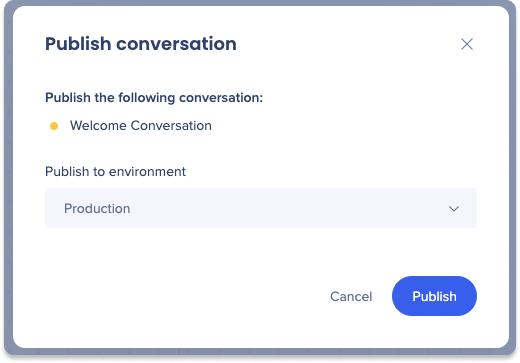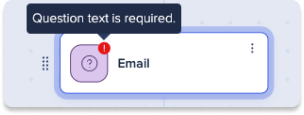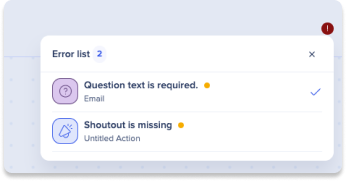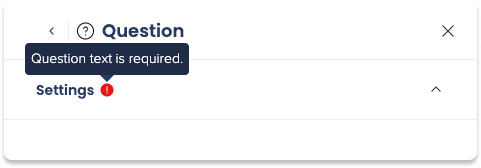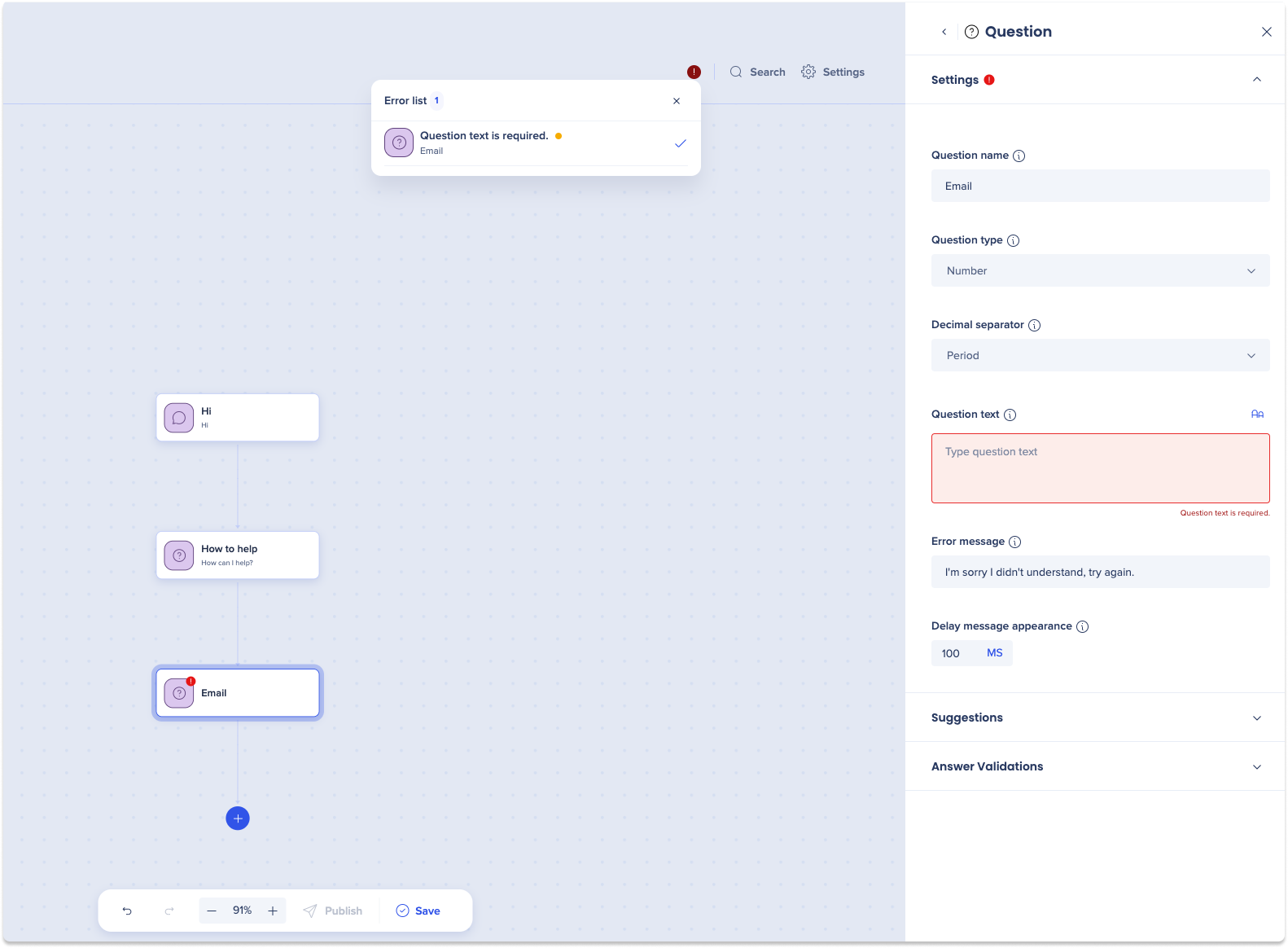Welcome to the
WalkMe Help Center
Please log in to continue

Please log in to continue

This article is a comprehensive guide on how to build a conversation for WalkMe's ActionBot in the console.
The console conversation builder is designed to be user-friendly and allows you to easily create conversations at any skill level. By simply adding steps to the flow diagram, you can create conversations to guide your users through a specific task.
What is a conversation?
A conversation is a flow of steps made of messages, questions, conditions, and actions. They're built without any code and allow you to answer user questions and/or collect information that can later be used to automate processes.
Conversations can be used to complete common tasks, tackle a support topic, navigate your users to a section of your application, or even provide a personalized search experience, all by using a simple chat interface.
WalkMe Console now offers a user-friendly conversation building process.
Conversations are created in the WalkMe Console → ActionBot tab → Conversations tab.
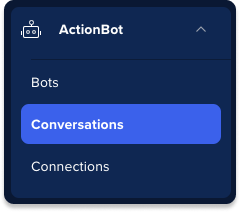
On the Conversations List page, click the Create Conversation button + to open the conversation building process.
After clicking the Create Conversation button in the console, a conversation diagram and settings side panel will appear.

You have two ways to start:
In both cases, you must complete any mandatory settings before publishing your conversation. If needed, you can always access the Conversation Settings by clicking the Settings icon located in the top right corner of the diagram.

After clicking the Create Conversation button, you will be directed to the Conversation Settings panel.
This panel includes mandatory fields that must be completed in order to publish your conversation:
Display name
Enter a name for your conversation that will appear to end-users when they choose from a list of suggested conversations.
Keywords
The bot is designed to recognize specific keywords in the user's messages. Once it identifies any of these keywords in the conversation, it will trigger the conversation.
To add keywords, either:
Click Bulk add to add multiple keywords at once
Type individual keywords in the text box and press enter
Enter as many keywords as you want
Assign bots
Select the bots where your end-users can participate in a dialogue with your conversation.
If you haven't created a bot yet, learn how to build a bot here:
Customize suggestions layout
Choose how suggestions are displayed in the conversation. You can select one of the following layouts:
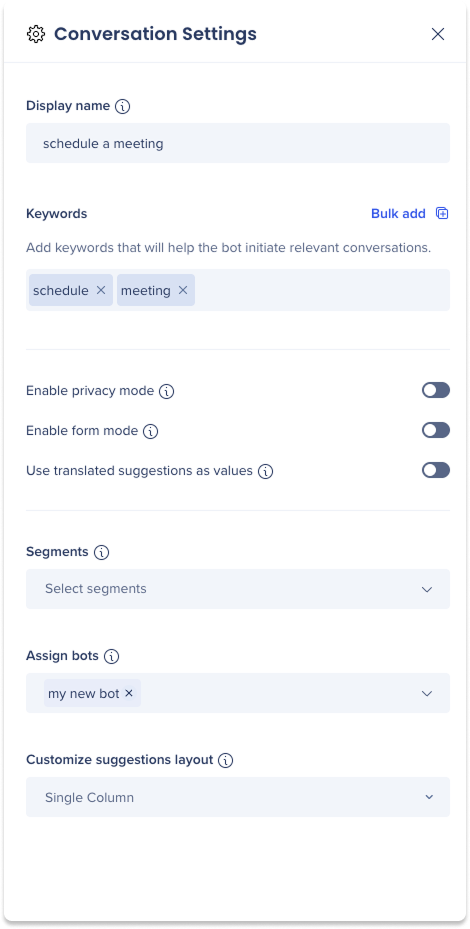
In addition to these mandatory fields, there are also optional settings that allow for further customization of the conversation:
Segments
Select segments to allow only specific groups of users to access the conversation.
Enable privacy mode
Privacy mode prevents conversation parameters entered by end-users (answers and inputs) from being sent and stored on or within WalkMe servers or databases.
Enable form mode
ActionBot Form Mode allows you to switch the end-user conversation view from question-by-question to a single from view for conversations that do not require splits in the Bot's dialog.
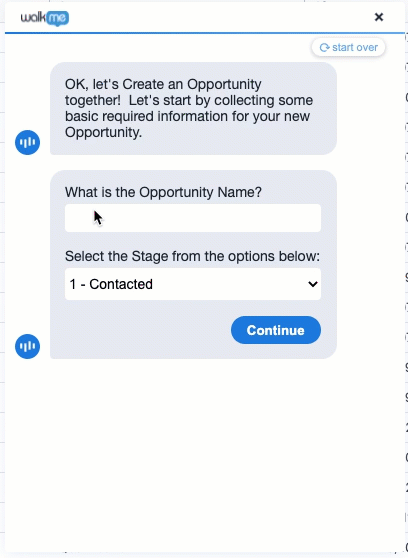
Use translated text as values
When enabled, the translated suggestion will be used as the parameter value instead of the default language. This will apply to all suggestions in the conversation.
Now you're ready to structure your conversation flow using steps.
To start building your conversation, click the plus button + in the center of the conversation diagram. This will open the steps panel, where you can select a step from the list to add it to the conversation diagram and create your flow.
There are three main categories of steps for your to choose from. Learn more about each step type and how to use them here:
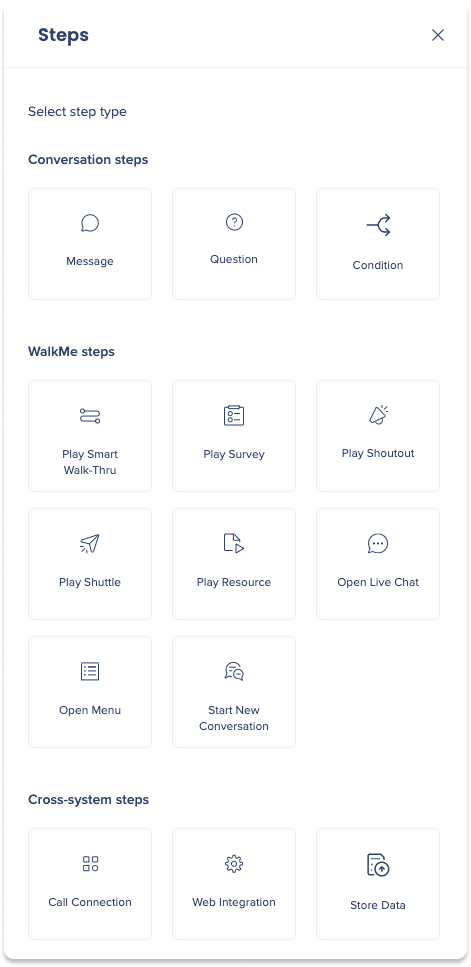
The conversation diagram provides a variety of tools to help you manage and edit your conversation flow. In this section, we will explore all of the available editing tools and provide guidance on how to use them.
Once you've added your first step, click the plus button + to continue adding more steps to your conversation flow.
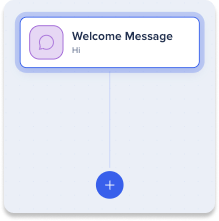
To access the hover menu, you must add at least two steps. Once you have added the steps, hover over the line that connects them to reveal the hover menu.
The hover actions include three options:

To access the step actions, hover over the desired step and click the three dots to open the step actions menu.
The step actions menu include three options:
Copy ID: Copy the unique identifier for the step
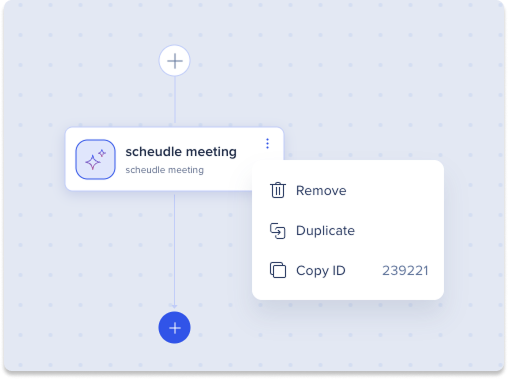
Click the Save button to save your work. After saving, you can exit the conversation building process and return to edit your work at any time. Your draft will be stored in the conversation list page on the console.

The preview feature allows you to experience the user perspective.
Click the Preview button to open your bot container preview and verify if the conversation is functioning as desired.
Click the Hide button to turn on off Preview.

Clicking publish verifies that all necessary components are in place. This includes checking that all mandatory fields have been filled and at least one step has been added.
How to Publish
